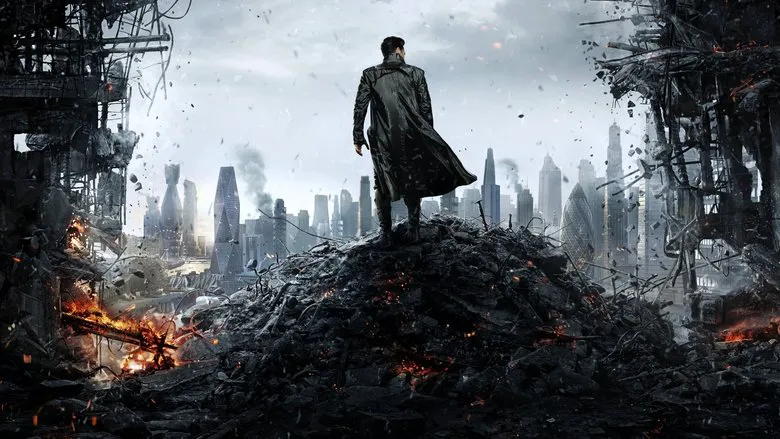Star Trek Into Darkness: A Thrilling Chase Through the Cosmos
In the tumultuous universe of Starfleet, a chilling new threat emerges as a cold, calculating terrorist, John Harrison, brought to life with formidable precision by Benedict Cumberbatch, launches a devastating attack. The very foundations of the United Federation of Planets are shaken, prompting Captain James T. Kirk (Chris Pine), at the helm of the iconic U.S.S. Enterprise, to lead a specialized Federation force. Their mission: to track down and neutralize this elusive criminal. Yet, for Kirk, this isn’t merely a professional duty; it’s a deeply personal vendetta, fueled by Harrison’s insidious acts.
J.J. Abrams’ Revitalized Vision
“The needs of the many outweigh the needs of the few.” This profound statement, echoing sentiments from classic literature, seems to be a foundational principle understood deeply by director J.J. Abrams. After helming several successful films, Abrams courageously took on the monumental task of rebooting Gene Roddenberry’s legendary 1960s TV series, “Star Trek.” With the maiden voyage of his re-imagined U.S.S. Enterprise, Abrams skillfully rescued the beloved franchise from the niche realm of “cult” cinema, where intricate debates among fervent fans about the superiority of Sisko or Janeway (with Picard often being the ‘correct’ answer) sometimes overshadowed its universal appeal.
His “Star Trek” (also known as “Star Trek XI” or “Star Trek 2.0”) seamlessly blended the spirit of exploration with a modern blockbuster sensibility, instantly captivating a broad audience. The creative minds behind this new iteration masterfully stripped away the verbose, often static characters with their anachronistic hairstyles that characterized earlier films in the franchise. Replacing them was a vibrant, intensely dynamic, and visually spectacular narrative that resonated with contemporary viewers. Crucially, even amidst this revitalization, Abrams maintained profound respect, if not always for the exact philosophical tenets of Roddenberry’s original, then certainly for the iconic characters he crafted. In his subsequent work on “Star Trek Into Darkness,” Abrams adhered even more rigorously to these successful principles, refining them to deliver an even more exhilarating experience.
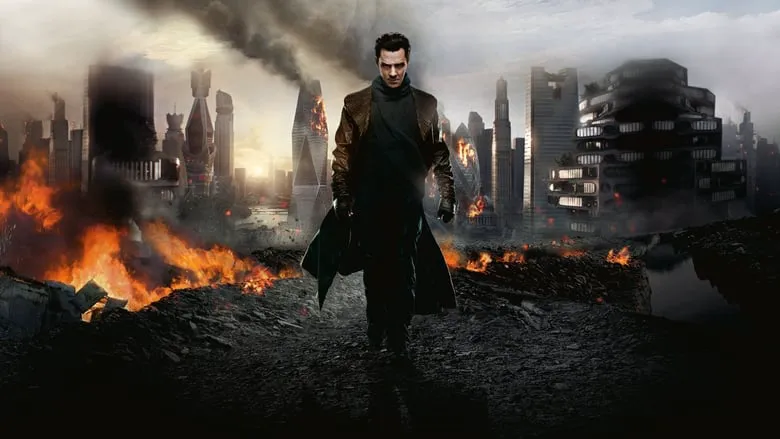
An Electrifying Opening Sequence
Drawing inspiration from adventure classics like “Indiana Jones: Raiders of the Lost Ark,” “Star Trek Into Darkness” thrusts its audience immediately into a breathtaking, dizzying climax of an adventure only hinted at. We are plunged onto an alien world, seen from above, captivated by its screaming scarlet vegetation and a frenetic camera that follows Kirk (Chris Pine) and Doctor Leonard “Bones” McCoy (Karl Urban) in a desperate flight. They are pursued by a pack of enraged, white-faced natives adorned in striking yellow hoods, their escape routes brutally cut off by a precipitous cliff edge. The tension ratchets up even further as Spock (Zachary Quinto) is dramatically parachuted directly into the maw of an active volcano—his perilous mission to prevent a planet-ending eruption. This seemingly absurd yet magnificently daring cinematic example of pure action provides unadulterated thrills. Should audiences witness a more thrilling and visually spectacular episode this summer, they ought to consider themselves profoundly fortunate.
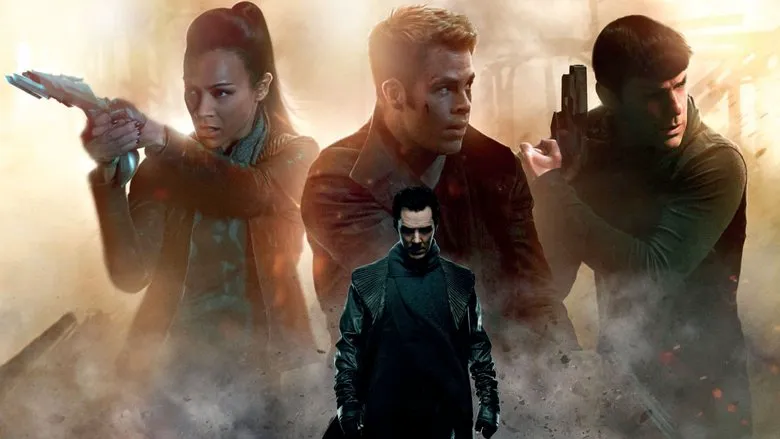
A Relentless Manhunt Across the Stars
After such an explosive beginning, one might expect a moment to breathe, but “Into Darkness” refuses to relent. The creators immediately put their foot on the gas, initiating a gripping film-long manhunt. The narrative propels us forward following a catastrophic bomb explosion within the Starfleet archives in London—a meticulously designed 23rd-century metropolis now punctuated by futuristic “London Cucumbers.” The pursuit of a terrorist, the impeccably dressed renegade John Harrison, begins in earnest. While Abrams’ first “Star Trek” film faced some criticism for veering too far from Roddenberry’s long-standing precepts regarding real-world commentary, “Into Darkness” eerily exhibited an almost preternatural prescience. Mere weeks after the somber events in Boston, audiences found themselves watching a film centered on a hunt for a bomber. Adding another layer of moral complexity, Kirk receives an order that flies in the face of Starfleet’s ideals: to forgo a fair trial and obliterate Harrison using cloaked photon torpedoes. This bold directive, “I’ll grind this bastard into powder!”, transforms the pursuit into what is, in essence, a political assassination, executed in quintessential Star Trek style. It’s not hard to imagine future academic papers titled, “Bin Laden, ‘Star Trek,’ and American Retribution,” securing high marks for their insightful analysis.
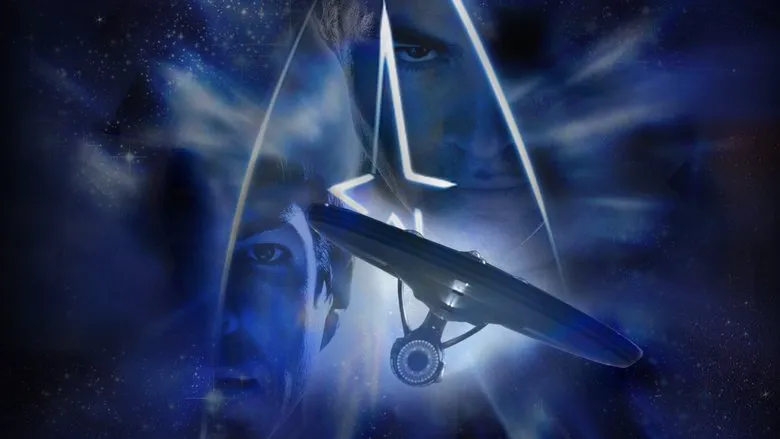
Benedict Cumberbatch’s Formidable Villain
John Harrison, as portrayed with icy precision by Benedict Cumberbatch, transcends the typical antagonist. Despite his impeccably tailored appearance, befitting a model on a GQ cover, he is, in essence, a one-man army. Harrison effortlessly dispatches an entire garrison of heavily armed marauders, endures Kirk’s brutal physical assault without flinching, and personally inflicts substantial damage upon Federation soldiers. Yet, as one might anticipate from an actor who has masterfully inhabited complex roles such as Sherlock Holmes and Stephen Hawking, his Harrison is not merely brawn but a formidable intellect.
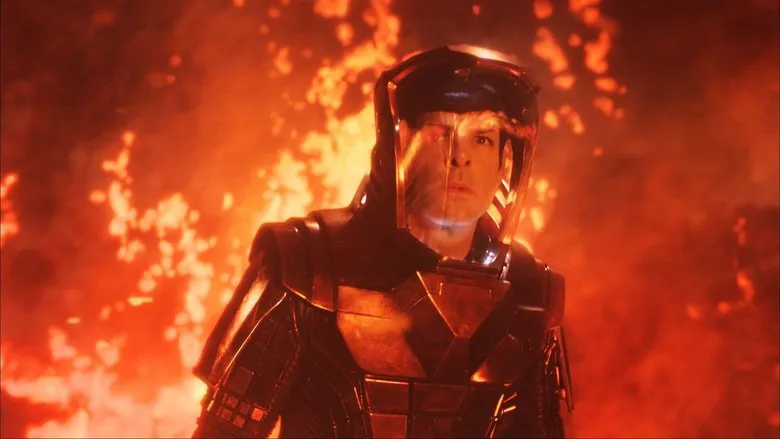
There’s a hint of the maniacal, yet meticulously reasoned, logic akin to the villainous Silva from “Skyfall” woven into Harrison’s intricate master plan. However, Cumberbatch’s serenely controlled demeanor ensures that his performance never veers into banality, elevating the character to a chilling degree. The sheer depth of Cumberbatch’s acting prowess is evident in how commanding and terrifying Harrison remains throughout the entire film. This deeply unsettling impression is so powerful that it cannot be diluted, even by the deliberately ominous and villainous musical themes that accompany his initial disconcerting appearances on screen.
Shifting Dynamics and Divided Loyalties
While the first reboot film masterfully depicted the crew of the U.S.S. Enterprise coalescing into a single, cohesive unit, “Into Darkness” demands a different approach. To effectively counter Harrison’s multifaceted threat, the crew finds themselves needing to branch out and operate independently. The ensemble cast of “Into Darkness” truly shines, with their powerful performances clearly outlining the emergence of future media luminaries. Audiences will especially revel in the deepening, undeniable ‘bromance’ between Kirk and Spock, the consistent comedic relief provided by Doctor “Bones” McCoy’s wonderfully cynical aphorisms, and — a delightful surprise! — the impactful yet swordless appearance of the steely Hikaru Sulu (John Cho).
However, the rapid pacing means viewers have limited time to form deeply lasting attachments to these evolving characters. The same holds true for the anticipated continuous duel of wits between Kirk and Harrison. Throughout the film, one anticipates a psychological interplay akin to Hannibal Lecter and Clarice Starling; however, these hopes, while sometimes realized, never quite reach their full potential. Abrams possesses a remarkable talent for weaving personal, emotional moments even into the most intense battles. In this regard, the evolving storylines of Kirk and Spock are particularly compelling—Kirk maturing into a true captain, Spock learning the profound value of friendship. Yet, the film’s brisk framework at times feels too constricted for these poignant emotional interludes to fully resonate in the hearts of viewers and leave an indelible mark.

A Reverent Nod to Star Trek History
Much like its predecessor, “Star Trek Into Darkness” is generously peppered with allusions and Easter eggs that pay homage to the rich tapestry of “Star Trek” history, encompassing both its television and cinematic incarnations. Some of these references are cleverly integrated and sophisticated, subtly rewarding the most ardent fans, while others might strike
hardcore Trekkers as overtly obvious or perhaps even gratuitous. Nevertheless, the film’s adherence to the fundamental ideals of “Star Trek” remains remarkably steadfast. Whether exploring the critical importance of the Prime Directive (the non-interference principle governing alien cultures) or deeply examining the intrinsic conflicts between animal instinct and cold logic, or the enduring tension between pacifism and bestiality, these core themes are expressed with even greater emphasis in “Into Darkness” than in the preceding “Star Trek” film. Despite this deep respect for tradition, Abrams steadfastly refuses to let an overbearing reverence for “Trekker” lore detract from the sheer fun and exhilarating entertainment value of the movie. And for those keen-eared fans, be sure not to miss an incredibly witty joke involving one of the most iconic sound effects from the original series!
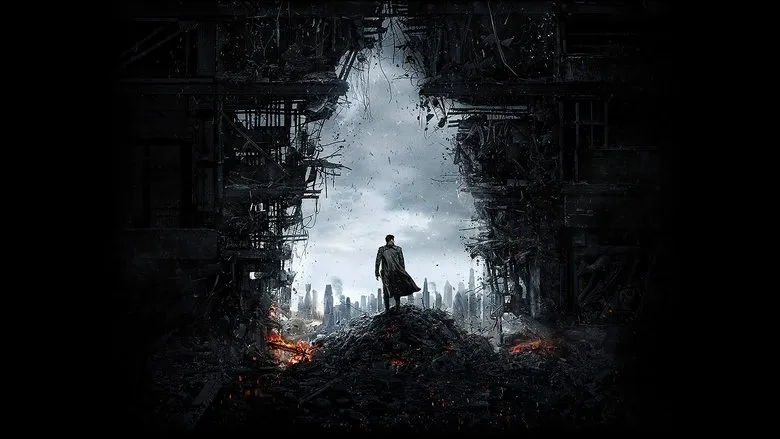
A Masterclass in Thrilling Entertainment
Mercifully, a pervasive sense of playfulness permeates “Star Trek Into Darkness” from beginning to end. The film possesses a magnetic allure, both literally—with Kirk’s amusing, brief encounter with two tailed alien beauties—and figuratively, through its visual language. Cinematographer Dan Mindel masterfully fuses the glossy, high-tech aesthetic often associated with science fiction with a tangible human warmth embedded within every frame. Abrams’ direction is consistently spectacular, luminously bright (so much so you might swap your 3D glasses for stylish Ray-Bans!), and, most importantly, incredibly skilled. His directorial style gracefully navigates the space between James Cameron’s mechanically honed precision and Michael Bay’s manic, frenetic intensity. Abrams is both highly effective and possesses a dynamic freedom that almost suggests an improvisational brilliance.
Working hand-in-hand with talented screenwriters Roberto Orci, Alex Kurtzman, and Damon Lindelof, Abrams is empowered to swiftly pivot narrative intonations. A lighthearted, comic quarrel between lovers can seamlessly transition into profound and touching reflections on the very nature of fear. The film ingeniously employs every conceivable cinematic technique to keep the viewer thoroughly entertained: a nail-biting, dramatic episode of bomb defusal, a scene of tense and intricate inter-species negotiations, a high-stakes game of cat and mouse played out between two starships—one colossal, one nimble—the beloved comic relief offered by Simon Pegg’s Scotty, a breathtaking chase sequence at warp speed, sheer chaos extracted directly from disaster films, and even a fleeting, memorable appearance by Alice Eve in a black negligee. This is but a fraction of the film’s expansive repertoire. Not every single element precisely hits its mark—for instance, while the final action sequences are undeniably solid, they don’t quite achieve the jaw-dropping impact of the initial scenes. Nonetheless, the overwhelming impression is that of witnessing the work of a true showman. Much like George Lucas, Abrams is not preoccupied with overly complex science fiction gadgets, such as abstract concepts like cold nuclear fusion or interdimensional transitions. His singular aim is simply for everyone to be captivated and to have an absolute blast.
It’s widely known that Abrams next embarked on directing “Star Wars: Episode VII,” and the temptation to dissect “Into Darkness” for hidden clues to the forthcoming saga was immense. The director clearly favors tangible, physical scenery over the often sterile green screen, preferring charming, subtle nuances to the broad strokes employed by industrial light & Magic (ILM). Pay close attention, for instance, to the enchanting trails of cosmic dust that elegantly accompany starships transitioning to warp speed. Abrams shows no fear of authority, embracing old-school, non-montage filming techniques, and demonstrates an innate ability to film characters running through corridors with thrilling effect. If he maintains this deliberate approach and fully unleashes his signature talent for crafting genuinely lifelike characters, we could be on the cusp of experiencing a film of the caliber of “The Empire Strikes Back.” In one particularly memorable episode of “Into Darkness,” Kirk undertakes a daring jump through subspace—a maneuver rapidly becoming a patented feature of Abrams’ franchise. In the midst of this perilous maneuver, the ship’s computer briefly freezes. At that precise moment, it becomes nearly impossible to resist shouting, “Use the Force, Jim!” Given such exhilaration, how could anyone not eagerly anticipate 2015 and beyond?
